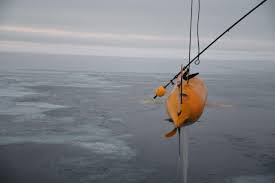Boaty’s job is to measure temperature, salinity, current velocity, turbulence, turbidity, and dissolved oxygen in water as it charts a path through the icy underworld. Scientists can then use this data to understand how variations in these conditions affect the behavior and stability of local ice shelves. Another underwater robot, Ran, is in charge of mapping the shape of the seabed, and the expanse of caverns and dimples covering the underside of the glacier. It will also collect samples of water for in-lab analysis.
Boaty, the programmable robotic sub, was developed at the National Oceanography Centre. It travels on its own to great depths on scientific missions under water and ice. As an autonomous long-range vehicle, Boaty can traverse hundreds of miles for several months at a time. It can even venture as deep as about 3.7 miles below the surface. Boaty completed its first under-ice operation in February 2018, when it spent 51 hours beneath the frigid waters of the southern Weddell Sea.
Source : https://www.popsci.com/technology/boaty-mcboatface-antarctica-thwaites-glacier/








